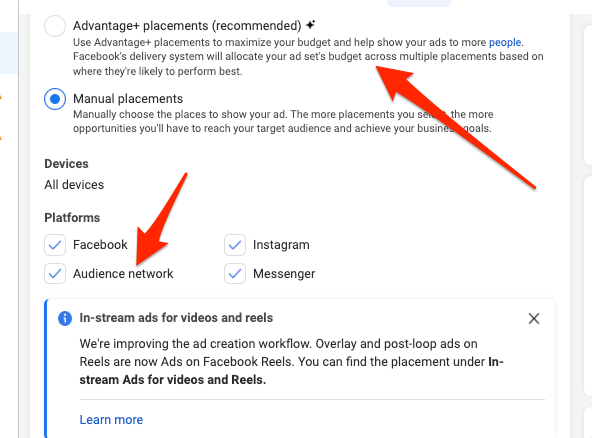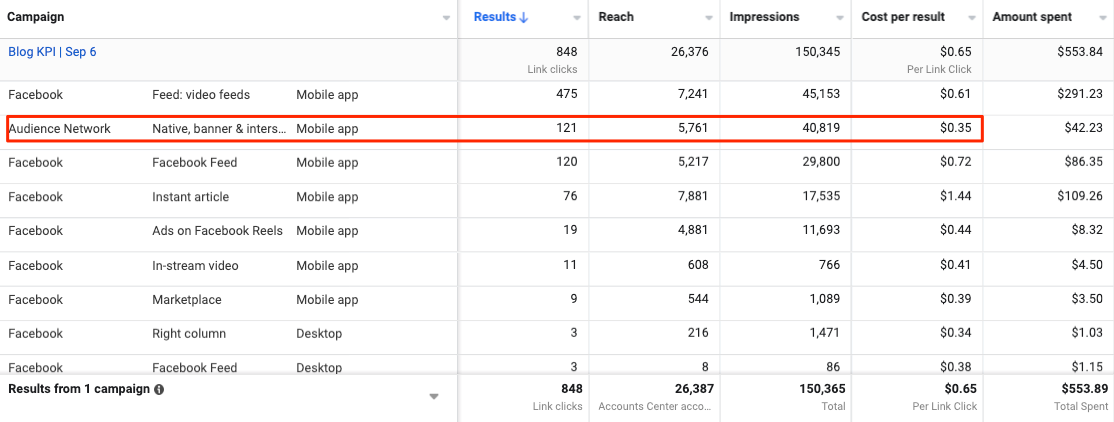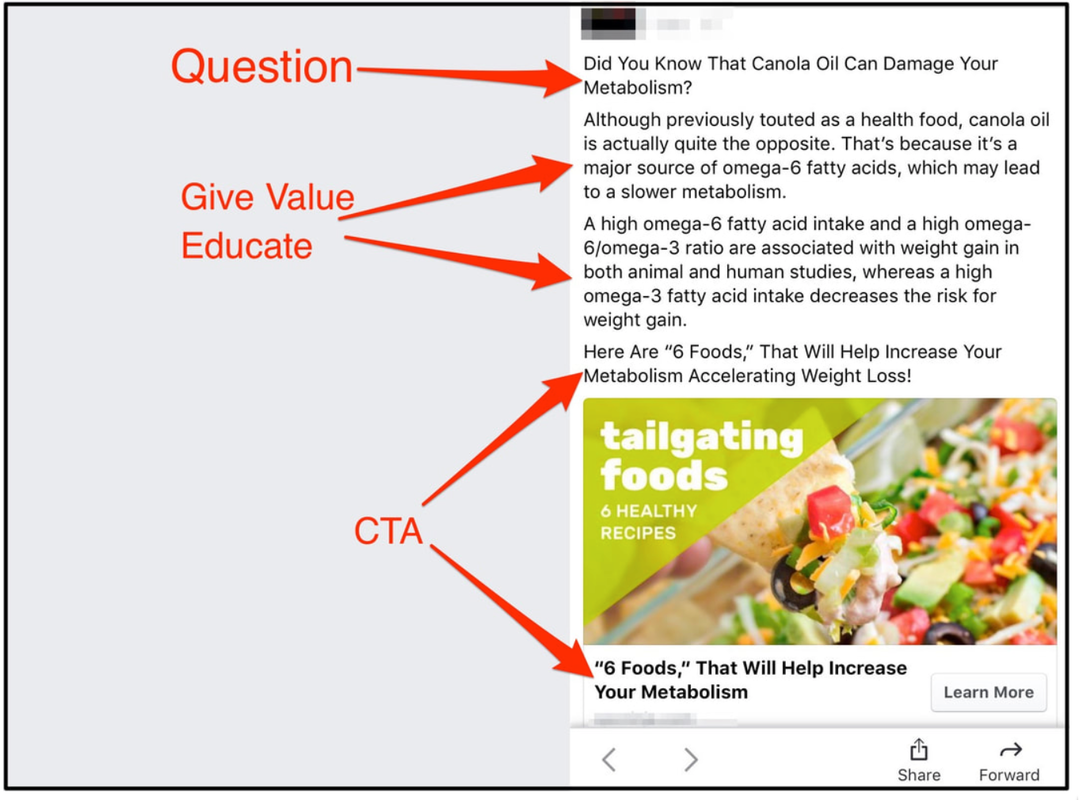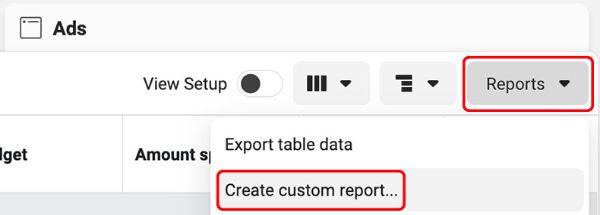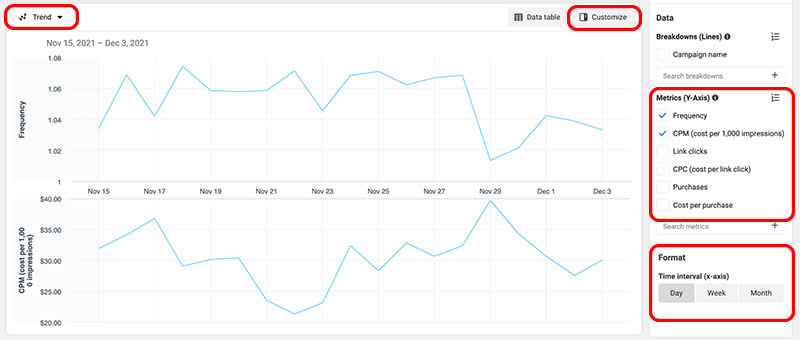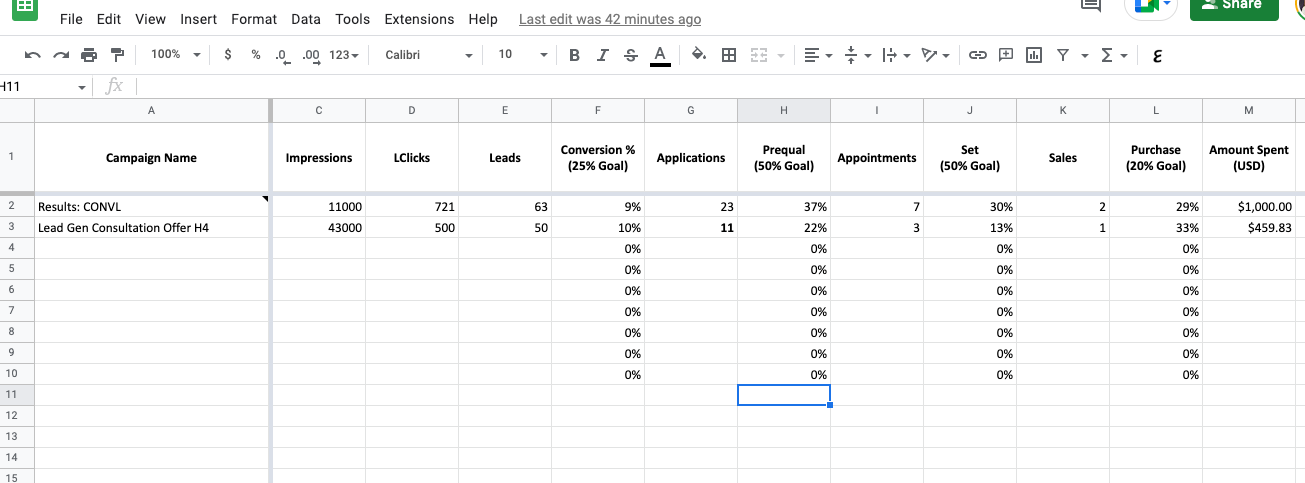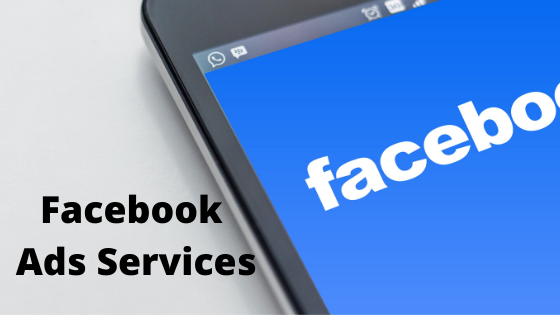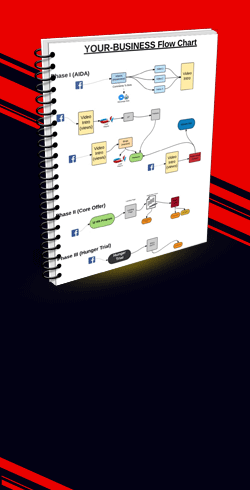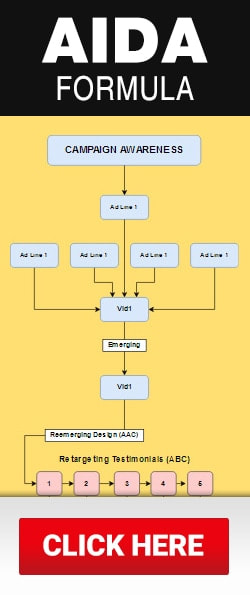|
Do not run ads on the Audience Network, here's why! What is audience networkOverall, it's a placement where Facebook can show you ad to 3rd party websites such as gaming apps and etc... Here is what Chat GPT had to say about Audience Network. Facebook Audience Network is a mobile advertising network that allows advertisers to extend their Facebook ad campaigns beyond Facebook and into other mobile apps. With Audience Network, advertisers can reach users with targeted ads in a variety of formats, including banner, interstitial, and native ads. Audience Network uses Facebook's targeting data to reach users based on their interests, behaviors, and demographics. This allows advertisers to reach a highly engaged audience that is likely to be interested in their product or service. By using Audience Network, advertisers can expand the reach of their campaigns and drive more traffic to their websites or mobile apps. Publishers can also benefit from Audience Network by monetizing their mobile apps with high-quality ads and earning revenue for clicks and impressions. Overall, Facebook Audience Network offers a powerful advertising platform that can help businesses reach their target audience and achieve their marketing goals. do not show your ads thereThe reason I am stressing you not to show your ads on that platform is because the quality of traffic it gets. These people normally are accidental clickers. They see this ad while they are playing a game and they click it to close it out. You are going to see a "Higher" bounce rate once your traffic hits your page. It will hurt your conversion rates. The cheapest traffic to source by far but you will get what you pay for. Look at my blog ad example below. You can see a huge amount of my traffic came from Audience Network, and the cost per click it gave me. It game me some cheap clicks but when I looked at my analytics. The traffic all bounced. That's roughly 99% of that traffic to leave the website immediately once they arrived. So in turn I told Facebook to give me link clicks to get readers to my blog. And that is "exactly," what they did. Gave me clicks. So if you want to optimize for quality. I would suggest checking your placement. instant article placement qualityYou can see in the above image that my $1.44 cost per clicks came from the Instant Article placement. When I looked at that traffic source my bounce rates were 37%. That is much lower. Reason is because they are on that area consuming articles. When they see a blog post ad, they will likely stay on the blog longer because they were in "consumer" mode, meaning. They were ready to read. This traffic is much more expensive as you can see from the image above but I was happy to have quality traffic that wanted to read my blog. I looked at the customer journey of my blog readers to signing up on my website and found out that a huge percentage came from the Facebook feeds, and Instant Article placement. It figures, because if they read the entire blog they would likely be willing to read other blogs and sign up for something that was appealing. audience network gets you poor qualityYou can see from the stats proving that my traffic I sourced quality from was actually from the feeds and Instant Articles.
It makes perfect sense, I didn't get not one signup from Audience Network. Now don't get me wrong that placement is good for certain times of businesses and models (such as if you are selling a game app) but it's not the best placement to show your ads if you are looking to generate leads for your serviced based business or e-commerce store. The main reason is because the placement of the ad makes it hard for people to not click it. Thus optimizing for cheaper clicks (if that is your campaign objective) and this generates you more clicks, cheaper, but horrible quality in many cases. Just the next time you do auto-placement, and your objective is optimizing for link clicks then turn this placement off, otherwise you will waste a portion of your money getting unwanted clicks. I wanted to share these useful tips on how to improve your Lead Quality just from making small changes within your Facebook ads. Keep in mind that quality can also improve in other parts of your funnel but here are some ways to improve it within your ads. 1. Use Video ads. Video ads if done correctly can improve the lead quality. Just make sure in the video you are labeling the viewers with problems so that only viewers who have this specific problem would be interested in watching the video. 2. Optimize for below the fold link clicks. If you are sending traffic to a landing page make sure that the image is not clickable. If the image if clickable you may often at times get "happy clickers" who don't read your content and just click the image. Instead use a video because clicking the video will not take them to the funnel. And do not use a Call To Action button. A percentage of people may click that button without consuming the content. Instead in your ad copy below the page fold insert the hyperlink in the ad copy at the bottom. Forcing the read to read all of the content before clicking the link. You will suffer from lower click through rates, and potentically higher cost per clicks but in the end you will get less volume and more quality clickers. Quality clicks leads to quality leads. 3. It's all about your ad copy. Ensure in the ad copy you are calling out your market and explaining why they should click the ad. It's also important to explain who this ad isn't for and why they shouldn't click it. This sometimes filters out people who shouldn't click the ad. We've actually used "sales copy" in the ad copy itself and generated better clicks. We suffered from lead costs going up but we did aquire quality and our sales cost (Cost Per Sale) actually went down. It took a little time for the algorythm to kick in but isn't that the main goal? The Cost Per Sale. Which is the most important attribution metric in the account. The Cost Per Sale determines ROAS (Return on Ad Spend). Cheaper Cost Per Sale, Higher ROAS. Higher Cost Per Sale, lower ROAS. Test variations of ad copy and educate the audience in the ad. It will build rapport and quality. This is an example of a "Did You Know Ad." It's made to build rapport, earn a trusted click. 4. Ask more questions in your Lead Form. If you are using lead forms. Ask questions. Don't just get the Name, Email, Phone. Ask a few questions that can qualify the prospect. I normally ask them what made them want to click on my ad, and if they are potential clients who are suffering from a specific pain or problem, I may ask them what is that pain or problem, and how important is it to them on solving that pain or problem. Test variations of questions to get a understanding of who is clicking your ads. Note: It's important to consider doing this early. Because Facebook will optimize your ads for the objective that you want. For example. If you are targeting people who have a specific problem. If we do not address that problem, our ads will show to a big filter of people who could or could not be suffering from that problem. The pixel or ad will optimize to show to more people who are signing up on that generic form. These people may not be the ones you are looking for. However. If we label them with that problem in the form, and the only way for them to fill out the form is to answer those questions. It will begin to optimize for potential people who have similarities and help you show your ad to those people who are likely suffering from that specific problem. The object is to show your ads to potential customers. Facebook has become one of the most important platforms for digital marketing, and its advertising potential is hard to ignore. With more than 2.8 billion monthly active users still to this day, Facebook has the power to reach a vast and diverse audience, making it an ideal platform for businesses to advertise their products and services. One of the most critical aspects of advertising on Facebook is writing effective ad copy. A well-crafted Facebook ad copy can entice potential customers, increase click-through rates, and generate more leads and conversions. But writing great ad copy isn't easy; it requires a thorough understanding of your target audience, a strong brand voice, and an excellent copywriting technique. Here are some tips to help you write better Facebook ad copy: Define Your Target Audience Before writing any ad copy, it's crucial to know who you're writing for. Understanding your target audience is vital to crafting copy that resonates with them. To do this, consider their demographics, psychographics, interests, and pain points. Use Facebook's audience insights tool to gain valuable information about your target audience, including their age, gender, location, education, interests, and more. Highlight the Benefits of Your Product or Service Your ad copy should always focus on the benefits of your product or service, rather than its features. Customers are more interested in how your product or service can solve their problems, meet their needs, and make their lives better. Highlight how your product or service can make their lives easier, save them money, or help them achieve their goals. Use Persuasive Language Your Facebook ad copy should use persuasive language to encourage people to take action. Use words and phrases that create a sense of urgency or scarcity, such as "limited time offer," "don't miss out," or "while supplies last." Also, use emotional triggers that appeal to your target audience's desires and motivations, such as "feel confident," "enjoy more time," or "discover new possibilities." Keep It Concise Facebook ads have limited space, so it's essential to keep your ad copy concise and to the point. Make sure your ad copy is easy to read and understand, with short sentences and paragraphs. Use bullet points or numbered lists to break up the text and make it more scannable. Also, make sure your ad copy is free of errors and typos. Use Social Proof Social proof is a powerful tool that can help build trust and credibility with your target audience. Use customer reviews, testimonials, or ratings to show that other people have had a positive experience with your product or service. This can help convince potential customers to try your product or service. Include a Clear Call-to-Action Your Facebook ad copy should always include a clear call-to-action (CTA) that tells your target audience what action you want them to take. Whether it's to buy your product, download your app, or sign up for your newsletter, make sure your CTA is clear and specific. Use action-oriented language, such as "buy now," "download for free," or "get started today." Test and Refine Your Ad Copy Finally, always test and refine your Facebook ad copy to see what works and what doesn't. A/B test different versions of your ad copy to see which one performs better. Experiment with different headlines, ad copy, images, and CTAs. Analyze your ad metrics, such as click-through rate, conversion rate, and cost per click, to see what changes have the most significant impact.
In conclusion, writing effective Facebook ad copy requires a deep understanding of your target audience, a persuasive writing style, and a clear call-to-action. By following these tips and continually testing and refining your ad copy, you can create ads that capture your market's attention, and persuade them to take action! If you'd like to join my FREE webinar on How To Better Improve Your Ad Copywriting Click here! Ad fatigue is one of the most common issues when running Facebook and IG ads. It's when an ad or even an offer is shown too much to a particular audience over a period of time where they become tired of seeing it and the click rates start to drop therefore increasing costs. Follow these steps to spot any issues:
If you want to make decisions based on the big picture- which is always a good idea, change the view to weekly or monthly.
Also if you'd like to spot issues regarding declining clicks or conversions, then customize your Trend Chart Metrics (Y-Axis) to include: Link clicks, CPC (Cost Per Link Click) Leads, Cost per lead, and Purchases or Cost per purchase. WHAT IS A KPIA KPI stands for "Key Performance Indicator." It is a metric used to measure how effective your marketing campaigns are. In this blog we are going to discuss how to use our KPI template that we operate from to see if a client's ad account is getting great results and how to improve it by testing and measuring. first let's set up some kpi goalsThe goals we are going to to set up are going to be measured by "Monthly" so that we can set up weekly goals to hit our monthly goals sounds fair? Goals: 1. Number of Clients Per Month 2. Number of Shows Per Month 3. Number of Appointments Per Month 4. Number of Leads Per Month 5. Budget So for example my monthly goal is to get 1. 40 Clients 2. 100 Shows 3. 200 Appointments 4. 600 Leads 5. $5,000 Budget These are my goals (for example). And this is what I am going to set up to go by. Then I will break my monthly goals into weekly goals (measuring it as a 4 week month). 1. 10 clients per week 2. 25 shows per week 3. 50 Appointments per week 4. 150 Leads per week 5. $1,250 spend per week CPA goalsNow that I have my goals set. I am going to have to measure my cost per acquisition very closely so that I can determine if it is going to make sense that I will hit my goals by the end of the week. So my Cost Per Acquisition is the measurement of how much it's going to estimate to cost to acquire a goal. So if my spend is $5,000 a month. And the amount of leads I want to get at the end of the month is 600. Then I am willing to spend up to $8.33 to acquire a lead. If I spend more than $8.33. I will likely not hit my goal of 600 leads at the end of the month if my budget is $5,000. So my CPA goals are: 1. $125 Cost Per Client 2. $50 Cost Per Show 3. $25 Cost Per Appointment 4. $8.3 Cost Per Lead 5. $5,000 Budget So my KPIs goals are set. Now I am going to have to use this as a baseline to know where I am at with hitting my goals. optimizationIf I am hitting my KPI goal of acquiring a $8 Lead. But my Cost Per Appointment is $50 per appointment (which is double). That means my front end part (which is the ad, targeting, and the appointment setting area, etc.) is likely the area I want to focus on to improve my Cost Per Appointment. My goal is to get it cheaper and reduce my cost by half in order for me to hit my weekly targets. Week 1: Cost Per Appointment: $50 WTD: Change targeting, and hire setters to call leads Week 2: CPA: $22 Status: Improved So in the example above I have a $50 cost per appointment. It means it cost me $50 to get an appointment. And if my weekly goal is to get 50 appointments, at that rate I will only get about 25 appointments. ($1,250/$50 = 25 apts) That sucks! That means I will not hit my weekly goals. But at least I will be able to fix it in week 1 so that week 2 I will be able to catch up and hit my end of month goals "early." So what I did was change the targeting and targeted more qualified people. Then I hired some setters who called leads and was able to close more leads into appointments therefore lowering my cost by half. Results, gave me a $25 cost per appointment, allowing me to hit my goals at the end of week 2! summaryHaving a KPI template, setting goals, and actually knowing what your numbers are is going to set you up for huge success in the future. You will be spending money more effectively and being able to not only make decisions faster but also be on top of your marketing agency in the event they are not producing results. So you can download the marketing template below so that you can actually use this template to set yourself up! Hope it helps! Free download kpi templateI wanted to give you direct access to download my KPI template excel sheet I use to help me improve my marketing campaigns and our client's campaigns.
You can click here to download now! |

